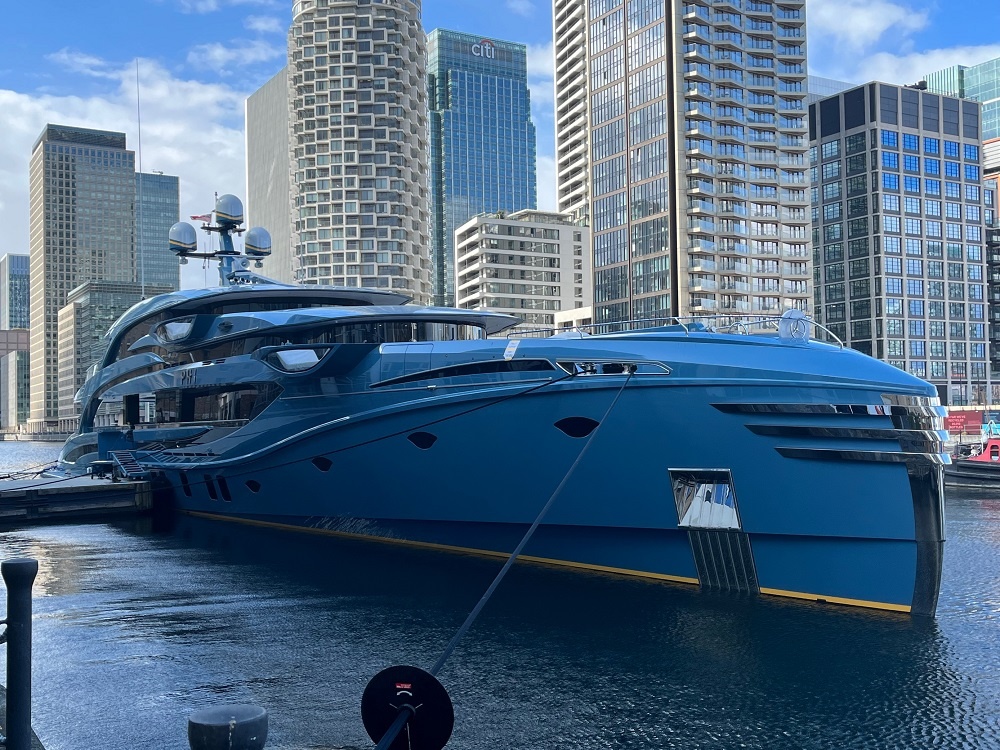
Seized maritime assets could pose a “significant risk” to ports, harbours and marinas if there is no requirement to ensure mega yachts detained under sanction rules are properly maintained, made safe or deactivated.
Safety concerns have been raised following the seizure by port authorities across Europe of a number of high-profile mega yachts thought to be owned by Russian oligarchs.
In London’s Canary Wharf authorities seized the US$38M Phi. The US$75M Axiom (built as Red Square! ) was seized in Gibraltar, and in Italy, authorities boarded the $540M SY A, one of the world’s largest privately owned yachts.
Yachts thought to be worth more than $16 billion are being held across Europe, in Finland, France, Norway, Spain, and Germany.
“When a vessel is seized it may no longer be in Class and under Flag, and any insurance, including P&I and H&M, is likely to have already been revoked, says Albert Weatherill, Managing Director, Van Ameyde McAuslands, UK.

Van Ameyde McAuslands are a Marine surveying and consulting company with head office in Hull, UK and a Superyacht services division based in Lymington on the South coast of the UK.
“From that moment the yacht, by default, becomes a liability of the state. And without insurance, proper loss prevention measures need to be in place to avoid losses and claims. Potential litigation could run into millions of dollars if assets are not properly made safe or shut down correctly. These are not vessels that can be simply turned off and walked away from.”
Normally, the annual upkeep of a mega yacht can exceed US$50 million, with flag state requirements calling for minimum manning and planned maintenance. But according to the surveying firm, there is confusion over who will be responsible for carrying out routine maintenance if any is being carried out at all.
“If crews o vessels that have been seized are not being paid and walk away or if sanctions prohibit maintenance, what happens if there’s a pollution incident? What happens if the vessel comes adrift or catches fire, if there’s theft or the vessel is sabotaged? There are too many unknowns, and in this industry, unknowns often equate to litigation,” Weatherill says.
Van Ameyde McAuslands believes that seizing authorities – flag states – should be aware of the need to take immediate action when a vessel is impounded. Indeed, it is thought that none of the seized yachts to date have been prepared for lay up or surveyed to prevent pollution or disruption to the port.
“These seized vessels need to be as safe as possible on the mooring,” says Weatherill.
While it is difficult to predict how long these vessels are going to remain alongside, to make them safe machinery should be deactivated, systems drained down, discharge overboard valves closed, fire systems checked and engines prepared for cold lay-up in accordance with Classification Society and OEM guidelines.
“This will prevent any potential damage to machinery, internal cabins, valuables, limiting financial exposure and liability. It will also safeguard against any potential risk to the maritime infrastructure, the environment and the public at large,” says Weatherill.
“Manning, deterioration, damage, fire, theft, danger to people and property – these are all very serious issues. When vessels are dormant for long periods there is potential for things to go wrong and when there is no insurance safety net to fall back on, it’s a big problem. We’re in unchartered territory.”
